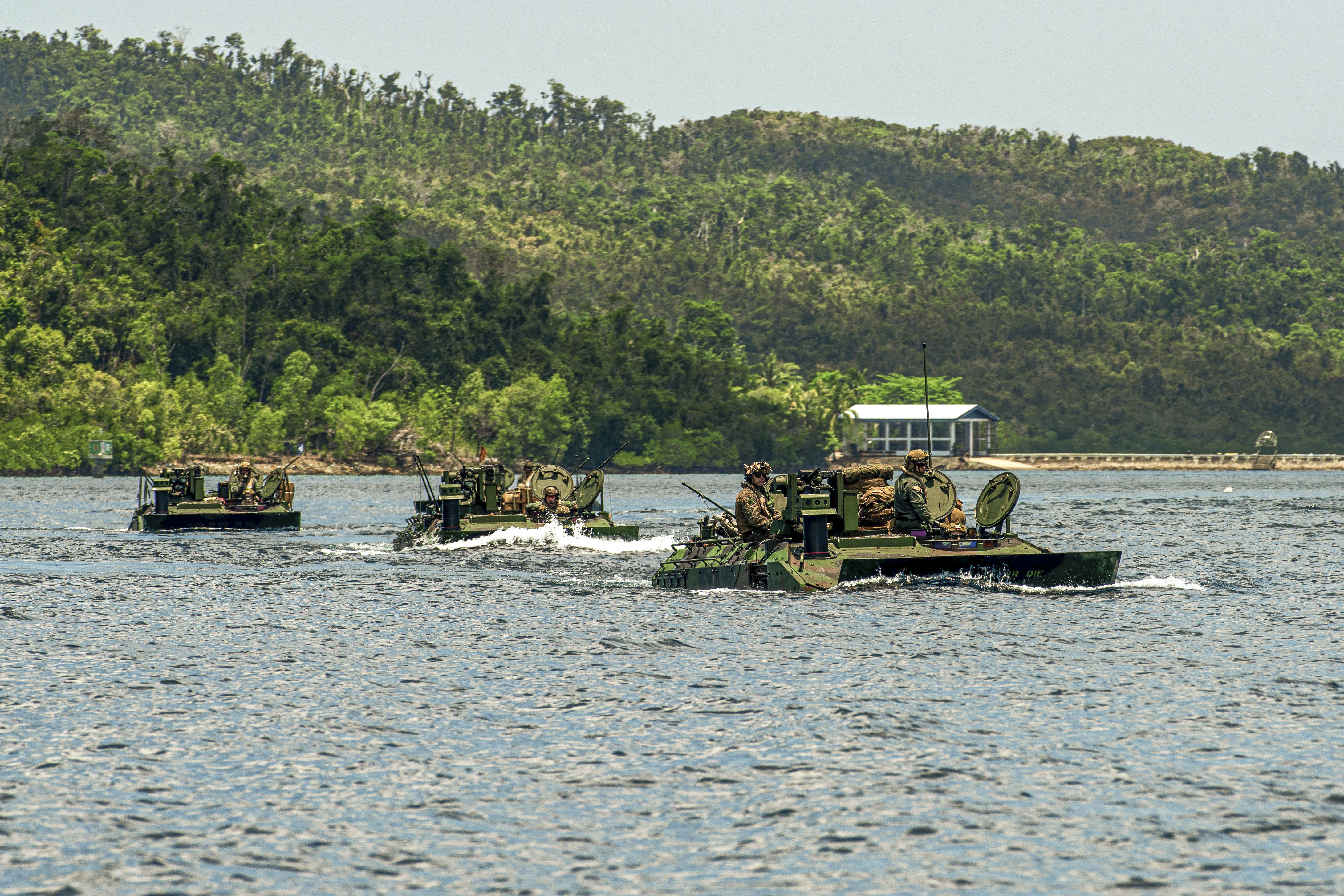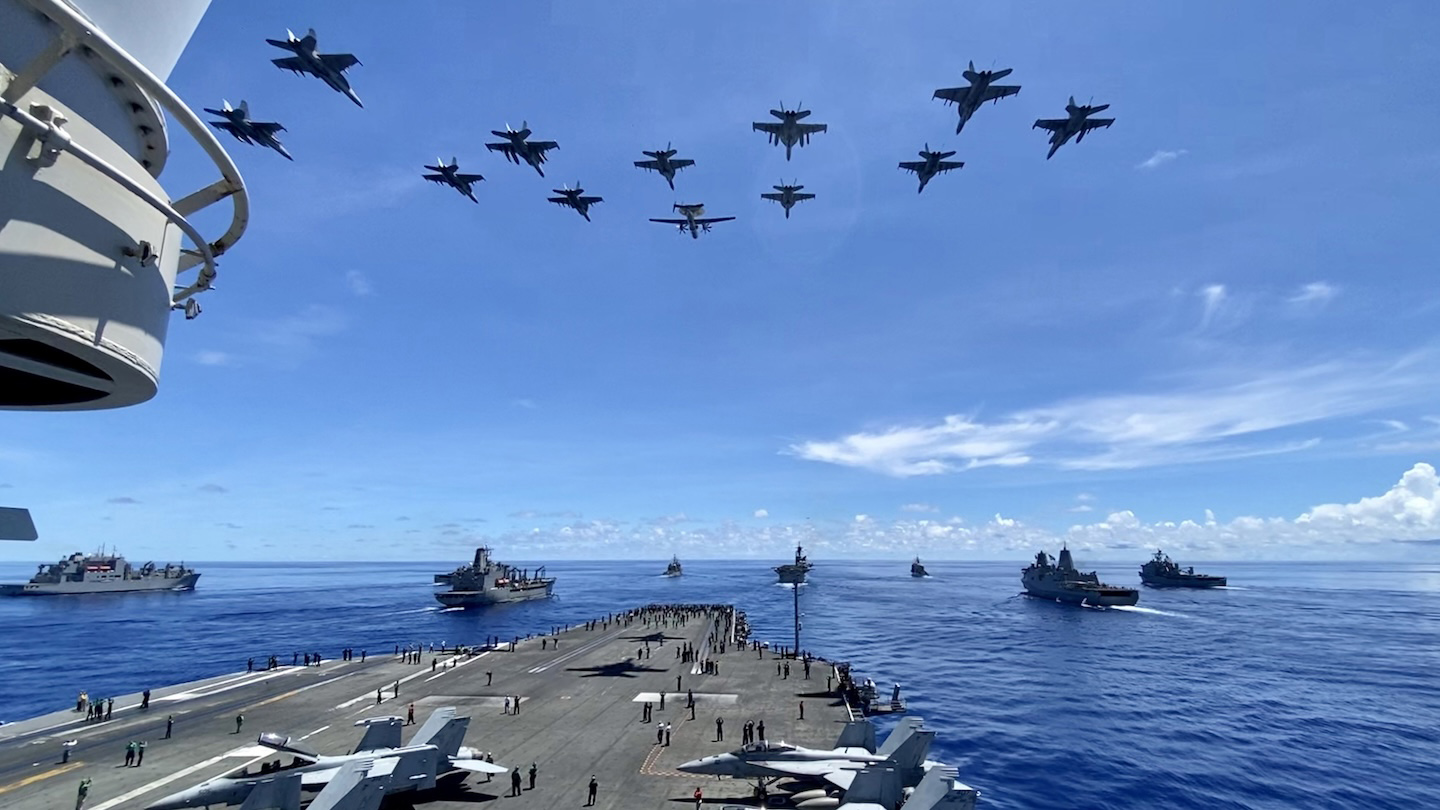The U.S. Department of Defense is starting to rehearse how its joint forces will fight as an integrated team across a massive battlespace in future war against China, rather than each of its services conducting their own maneuvers to practice for the same kind of scenario. In doing so, the aim is to get a much clearer idea in terms of requirements of what is needed to make such a complex combat engagement work. Prior to this sea-change, critical requirements generation wasn’t being done effectively or efficiently, according to Vice Adm. Michael Boyle, Director of Navy Staff within the Office of the Chief of Naval Operations, who laid out the Navy’s vision at the Sea-Air-Space Conference this week in National Harbor, Maryland.
The type of training that Boyle outlined underscores the fact that the Pentagon is now grappling with the reality of having to fight China on a grand scale in the Pacific theater. Coupled with this is the reality that, to stand any chance of success in such a scenario, the U.S. military would require a full and near seamless integration of its joint forces — as well as working alongside allies and partners.

“If we’re going to integrate the joint force, then how do we provide joint requirements?” Boyle observed when asked about particular challenges in the Pacific theater. “And so, I said, ‘How do we provide joint requirements?’ And we really don’t — the services each provide requirements. So, what’s the best place to determine what a requirement might be? In my mind, it’s joint rehearsal.
“I looked around to see where we do joint rehearsal, and we really don’t,” Boyle said. “What I saw was we do war games which validate a concept, we do experiments which validate a capability, and we do exercises which validate a plan, but we don’t do rehearsal, even our field training exercises where we get the teams together, validate tactics [but] don’t validate what the right capability to bring to the fight is.”

As a result of these traditional limitations on true joint exercises that prepare for a future Indo-Pacific conflict, the Pentagon has sought to make changes, “over the last couple of years,” according to Boyle, in the way it conducts these maneuvers.
At first, the U.S. Navy and Air Force were brought together for large-scale exercises with a Pacific focus. Subsequently, the Army, Marine Corps, Coast Guard, and Space Force were added, for a series of joint rehearsals in the Pacific.
“Those rehearsals are run and executed by the tacticians who are going to fight them,” Boyle added. “And so it’s not us trying to determine what kind of capabilities you can provide to the fleet. It’s the fleet saying, How do I win? And it’s not just the fleet, it’s the joint force.”
Among the tactics specialists taking part in these drills, Boyle named the Navy Fighter Weapons School, Air Force Weapons School, and Marine Expeditionary Force (MEF) from Camp Pendleton, California. The Space Force and Cyber Command also are playing key roles, “all of them together, running through rehearsals at the tactical level and figuring out, ‘how do I sense and make sense,’” Boyle continued.

“That’s what’s happening in the fleet now,” Boyle said, “and these requirements are starting to come in with a lot more fidelity, a lot more joint flavor.”
As well as involving the full breadth of the joint forces, this new approach to drills is notably forward-looking, with the aim of working out how to integrate the kinds of capabilities that “we know we’re going to need in 2040 and in 2050,” Boyle reflected.
“I don’t think we had a great system within the Pentagon, and that’s something we’re trying to change,” Boyle said, in relation to the way that Pacific-focused exercises have traditionally been run, compared to how they are now being optimized.
While Boyle didn’t refer to any particular exercises by name, it’s clear that larger, more ‘joined up’ exercises are becoming increasingly significant, especially when it comes to rehearsing for Indo-Pacific contingencies.
To a significant degree, this effort has been led by the Air Force, with REFORPAC (Return of Forces to the Pacific) coming this year.
A two-week exercise in the Indo-Pacific, this summer’s REFORPAC maneuvers are seen as a centerpiece of training events that are designed to better prepare for the threat of war against China.

Outlining REFORPAC, Air Force Chief of Staff Gen. David W. Allvin explained: “One of the issues that will be addressed — that we’re starting to address, we saw a little bit of this most recent Bamboo Eagle — is how mission-ready are we to deploy in a complex environment and sustain operations and be able to do logistics under attack? To be able to generate and maneuver within the environment, to sustain the mobility fleet that can get around, make sure the munitions and fuel and everything gets to the right place.”
Allvin referred to Bamboo Eagle, another large-scale airpower-centric exercise that focuses on the demands of a future Indo-Pacific war.

Bamboo Eagle takes place off the California coast and the first edition occurred last year, as you can read about in this past TWZ feature. The large force exercise series has quickly become one of the most important for the U.S. military, as well as key allies, and has a clear eye on preparing for a future coalition fight in the Pacific with China.
Like Bamboo Eagle, REFORPAC will also see participation by U.S. allies and partners.
After all, the Indo-Pacific theater is not only of growing strategic importance for the U.S. military. Last year, for example, air forces from France, Germany, and Spain took part in Pacific Skies, an unprecedented exercise that took aircraft to the Indo-Pacific region in a multi-legged journey to work together with other air arms.

As well as reflecting the continued ‘pivot to Asia,’ driven above all by China’s increasingly assertive military stance, these Indo-Pacific-focused exercises all grapple with the inherent challenges of a future conflict in this region.
For example, a war with China in the Indo-Pacific would involve joint forces, allies, and partners fighting over vast geographic expanses, with the requirement to operate in an expeditionary capacity in the face of unprecedented high-threat weapons engagement zones.
Boyle’s remarks at Sea-Air-Space underline the Pentagon’s growing concerns about its forces’ readiness to fight a conflict in the Indo-Pacific region. They also point to the recognition that success in such a scenario will depend to a significant degree upon different forces working together in a way that hasn’t necessarily been practiced in the past.
Contact the author: thomas@thewarzone.com
